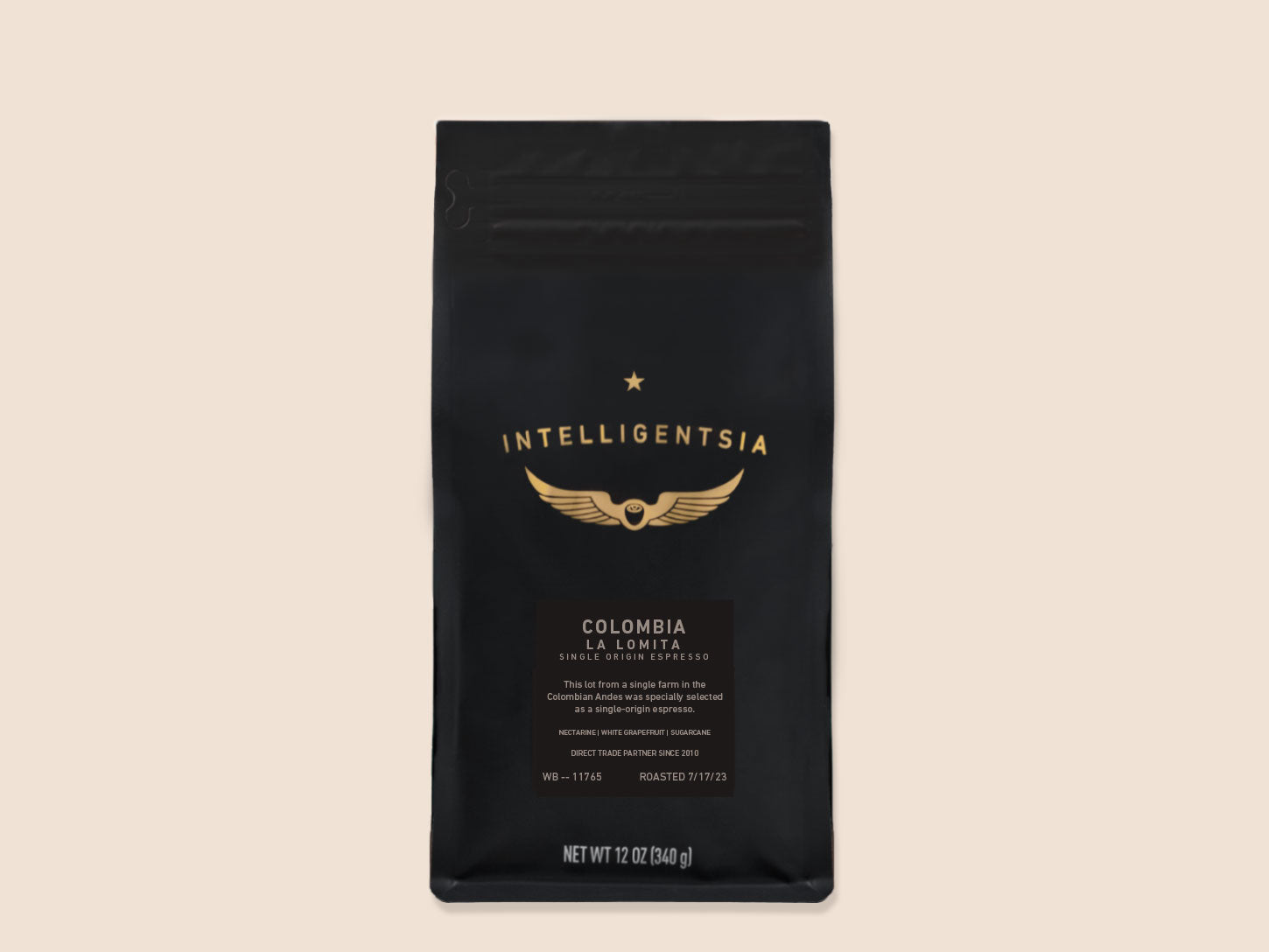Why SOE Single Origin Espresso Is Highly Rated Among Baristas
Why SOE Single Origin Espresso Is Highly Rated Among Baristas
Blog Article
Coffee Beans 101: Whatever You Required to Know Concerning Coffee and Blended Coffee Beans
When it concerns coffee, understanding the nuances of espresso and mixed beans can transform your day-to-day cup. You'll uncover the distinct characteristics of Arabica and Robusta beans, and exactly how each impacts flavor and caffeine material. From the expanding process to toasting methods, every action plays a function in your coffee experience. So, what makes the perfect brew? Allow's explore the essential aspects that add to an exceptional cup of coffee.
Recognizing Coffee Beans: Selections and kinds
When diving into the world of coffee, comprehending the kinds and varieties of coffee beans is crucial for every single fanatic. You'll mostly run into two main types: Arabica and Robusta. Arabica beans are recognized for their smooth, intricate flavors and lower caffeine web content, making them a favored amongst coffee aficionados. On the other hand, Robusta beans pack a punch with a stronger, extra bitter taste and higher high levels of caffeine levels, often used in espresso blends.
Within these varieties, you'll locate numerous local ranges, each bringing special features. As an example, Ethiopian Yirgacheffe provides brilliant floral notes, while Colombian beans supply a well-balanced taste account. As you explore, keep in mind to take note of handling techniques like washed or all-natural, as they can significantly influence the last preference. By familiarizing yourself with these beans and their tastes, you'll raise your coffee experience and make more enlightened selections in your brewing trip.
The Expanding Process: From Seed to Bean
When you discover the journey of coffee, it all beginnings with seed choice techniques that set the structure for high quality. From there, growing and gathering play vital functions in making sure the beans thrive. Processing approaches transform those collected cherries into the coffee beans you enjoy.
Seed Selection Strategies
Choosing the right seeds is vital for producing high-quality coffee beans, as it lays the structure for the entire expanding process. You must begin by selecting seeds from respectable resources that focus on top quality and hereditary variety. Look for varieties known to flourish in your particular environment and dirt problems. Focus on the seed's age and storage conditions, as fresh seeds often tend to germinate much better. When feasible, choose natural seeds to minimize direct exposure to unsafe chemicals. Think about the illness resistance of different varieties, as this can considerably impact your yield. Do not hesitate to seek advice from with local farmers or professionals to obtain insights right into the best seed alternatives for your region. This understanding will certainly enhance your coffee-growing experience.
Farming and Harvesting
As you support your coffee seeds into thriving plants, recognizing the farming and harvesting process is important for achieving the best taste and high quality. Begin by planting your seeds in well-draining dirt, preferably in a shaded area to shield them from direct sunlight.
Hand-picking is often the best method to assure only the ripest cherries are selected. Timing is crucial; harvesting too early or as well late can impact the flavor account of your beans.

Handling Approaches Clarified
When you've gathered your coffee cherries, the next vital action is processing them to transform those vibrant fruits into the beans you'll make. There are 2 major approaches: the wet process and the dry process. In the dry procedure, you spread out the cherries out in the sun to dry, enabling the fruit to ferment and give unique flavors to the beans. On the other hand, the wet process includes getting rid of the fruit right away and fermenting the beans in water, causing a cleaner preference. After processing, the beans are hulled, sorted, and normally dried out again. Each approach influences the flavor account, so trying out with both can aid you uncover your favored mixture. Recognizing these approaches is vital to appreciating your coffee experience.
Roasting Strategies: Just How Flavor Is Developed
When it comes to toasting coffee beans, recognizing roast levels is essential to revealing their one-of-a-kind tastes. Each toasting method effects the aroma and enhances the taste growth procedure, offering you a richer coffee experience. Let's check out how these elements collaborated to elevate your day-to-day brew.
Roast Levels Discussed
Roast degrees play an important duty in shaping the flavor account of your coffee. By understanding these degrees, you can much better select a coffee that matches your preference preferences. Experiment with various roasts to uncover which one resonates with you, boosting your total coffee experience and pleasure.
Effect On Fragrance
The roast level not only influences the taste of your coffee however additionally significantly impacts its fragrance. When you pick a light roast, you'll usually notice bright, floral notes that can make your coffee odor fresh and vivid. As the beans dim, the aroma shifts; a medium roast draws out a lot more well balanced, caramelized aromas, while a dark roast often tends to feature bold, smoky touches. Each roasting technique releases different volatile compounds, shaping how your coffee smells. Additionally, the freshness of the beans plays a critical role; newly roasted coffee launches extra fragrant oils, enhancing that enticing scent. So, focus on the roast level-- it's vital to disclosing the full aromatic experience of your mixture.
Flavor Development Refine
As you check out the flavor growth process, you'll uncover that roasting techniques play a crucial function see this site in shaping the preference profile of your coffee. The toasting temperature and time straight affect the level of acidity, sweetness, and resentment of the beans. Light roasts keep more of the bean's initial flavors, highlighting flower and fruity notes. Medium roasts balance acidity and body, supplying a well-shaped taste. Dark roasts, on the other hand, bring out strong, great smoky features while decreasing the bean's inherent high qualities. During roasting, chain reactions, like the Maillard response and caramelization, transform the beans and improve their intricacy. Trying out various roasting levels can assist you locate your ideal mixture, so do not be reluctant to taste and uncover the abundant spectrum of tastes!
Espresso vs. Blended Coffee: Secret Differences
Coffee and blended coffee each offer special experiences that deal with various tastes and preferences. Espresso is a concentrated coffee made by compeling hot water with finely-ground coffee beans, leading to an abundant, bold flavor and a velvety layer of crema ahead. It's frequently appreciated as a shot or made use of as a base for beverages like cappuccinos and lattes.
On the other hand, blended coffee combines various beans from different regions, creating a more balanced flavor profile. You'll frequently discover blends that highlight body, sweet taste, or level of acidity, making them flexible for different brewing methods. While espresso focuses on intensity, blended coffee may provide a wider variety of flavors that can transform with each sip.
Ultimately, your option in between espresso and mixed coffee come down to your individual choice. Whether you yearn for a leisurely cup or a quick shock, both alternatives have something tasty to use.

Brewing Techniques: Unlocking the Perfect Mug
When it pertains to brewing coffee, locating the right technique can transform your experience and boost your mug. Each brewing strategy has its special beauty and can substantially affect your coffee's flavor and fragrance. As an example, making use of a French press permits you to enjoy a rich and full-bodied mixture, while a pour-over method gives a clean, bright cup with distinctive flavors.
If you choose coffee, purchasing a quality machine can assist you grasp the art of drawing shots. Conversely, for comfort, a single-serve shell system uses rate without giving up preference.
Don't fail to remember about cold brew, which delivers a smooth, less acidic coffee perfect for warm days. Experiment with various methods to find what reverberates with your palate.
Sampling Notes: Identifying Flavor Profiles
Exactly how can you truly appreciate your coffee if you don't understand what flavors to look for? Tasting notes are your overview to recognizing the complicated world of coffee. When you drink, focus on the preliminary flavors that strike your taste buds. You may discover fruity notes, like berry or citrus, or maybe a nutty undertone. As you continue to taste, notice how the tastes advance-- this is referred to as the "surface." Some coffees could leave about his a chocolatey or sugar aftertaste, while others might have a brilliant, clean finish.
Think about the body of the coffee, too; is it light and ventilated or thick and syrupy? Don't neglect level of acidity; a bright level of acidity can add vigor, while a reduced acidity might offer a smoother experience. By determining these flavor profiles, you'll strengthen your connection with each mug, making coffee sampling a wonderful trip of exploration.

Tips for Selecting and Keeping Coffee Beans
Keeping and picking coffee beans correctly can substantially improve your developing experience. Beginning by choosing high-grade beans that match your preference - SOE.
When you have your beans, keep them in an airtight container to protect against exposure to air, dampness, and light. A dark, great area works best, so prevent maintaining them in the fridge or fridge freezer, as this can present moisture. Only grind the quantity you require to preserve freshness; whole beans maintain flavor longer than pre-ground coffee.
Finally, try to use your beans within two to 4 weeks after opening up for peak preference. Adhering to these pointers will certainly ensure your coffee remains pleasurable and delicious, boosting your daily mixture to brand-new heights.
Frequently Asked Concerns
How Much Time Do Coffee Beans Remain Fresh After Toasting?
Coffee beans stay fresh for concerning 2 weeks after toasting - SOE. You need to save them in an airtight container, away from light and wetness. After that, their flavor and fragrance start to reduce substantially

Can I Mix Different Coffee Bean Varieties?
Definitely, you can blend various coffee bean ranges! Explore blends can enhance flavors and create a special preference account. Simply see to it to balance the staminas and characteristics of each variety for the very best results.
What Is the Ideal Grind Size for Espresso?
For coffee, you'll want a great grind size, about the appearance of table salt. This permits ideal extraction, causing a rich, savory shot. Experiment a bit to locate what suits your preference best!
Exactly How Does Elevation Affect Coffee Bean Flavor?
Elevation impacts coffee bean flavor by affecting the growth rate and chemical composition. Higher elevations bring about slower maturation, which improves level of acidity and complexity, offering your sites coffee a distinct and vivid preference you won't neglect.
Are There Decaffeinated Versions of Espresso Beans?
Yes, there are decaffeinated versions of coffee beans. You can delight in a rich espresso taste without the caffeine kick. Just seek "decaf" blends at your regional cafe or specialized store.
Coffee Beans 101: Whatever You Need to Know Concerning Coffee and Blended Coffee Beans.
When diving into the world of coffee, understanding the kinds and varieties of coffee beans is necessary for every fanatic.When it comes to toasting coffee beans, understanding roast degrees is vital to revealing their distinct tastes. Coffee is a concentrated coffee made by requiring warm water through finely-ground coffee beans, resulting in a rich, strong taste and a creamy layer of crema on top.On the other hand, blended coffee integrates various beans from different areas, developing an extra well balanced taste account.
Report this page